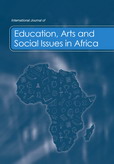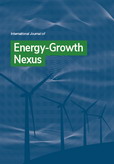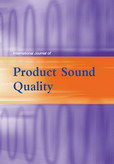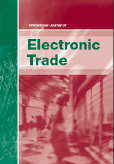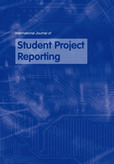Explore our journals
Browse journals by subject
Research picks
- Ctrl + Alt + Teach – Rebooting education
A new approach to assessing educational quality in teaching is discussed in the International Journal of Computational Systems Engineering. The approach improves on earlier methods by side-stepping reliance on top-down performance evaluations and instead blends traditional classroom instruction with digital tools, with the aim of building more adaptable, inclusive, and data-informed learning environments.
Central to this new approach is a dynamic feedback system that monitors not just what students learn, but how they learn. It also considers how external factors might interrupt or shape their learning. The system looks at teaching effectiveness, student adaptability, and the impact of classroom disruptions. Most importantly, though, it puts both teachers and students at the centre of attention, regarding them as being in an active partnership. Instead of the conventional one-way street of teaching, the team offers a collaborative model of responsibility for educational outcomes in what they refer to as the "school effort partnership".
The team explains that educational success depends not simply on curriculum content, but on the interplay between the teacher's knowledge and their students' capabilities. In this new approach, teachers are encouraged to take on the role of facilitators, they are then guides who might adapt their methods based on real-time feedback. For their part, the students are expected to develop what the researchers term "inventive consciousness" a state of active, creative, self-directed engagement with the learning tasks presented to them.
Classroom observations and surveys have given them the empirical evidence to show that this approach can work well. It is especially successful in the education of students struggling with behavioural or attention-related challenges. When teachers adjust their approaches based on student needs and classroom dynamics, the team saw measurable improvements in participation and comprehension.
At a time when educational inequality is a persistent problem and when digital transformations continue to reshape work and life, this new approach could provide a timely, educational solution based on a more holistic view of teaching and learning that uses the very digital tools that have disrupted other areas of human endeavour.
Huang, C., Zhang, F. and Li, X. (2025) 'A network model for a mobile learning environment to track students' progress', Int. J. Computational Systems Engineering, Vol. 9, No. 9, pp.1–8.
DOI: 10.1504/IJCSYSE.2025.146390 - Getting waste off the menu
Efforts to combat food waste in university canteens have generally focused on what students leave on their plates. A study in the International Journal of Environment and Waste Management turns the tables on campus catering and suggests that there are opportunities for saving server-side too.
Food waste is more than a logistical inconvenience, explain Boineelo Pearl Lefadola, Annemarie Viljoen, and Gerrie du Rand of University of Pretoria in South Africa. It is a growing problem feeding into climate change, resource depletion, and falling global food security. Unfortunately, many interventions in institutional settings remain reactive rather than proactive and tend to home in on the plate-scraping after the dining session is over rather than looking at improving efficiency in the kitchen and behind the serving hatch.
The team recommends a systems approach that puts every aspect of food service on the efficiency menu. For starters, they consider ingredient procurement, the mains of storage, preparation, service, and the just desserts of food waste disposal. Systems theory cooks up the idea that inefficiencies or failures at any stage can ripple through to the next course, fattening up the waste bins. The team looked at the data, talked to staff, focus groups, and made first-hand observations within a university's food service operation.
Their findings reveal that setting a place for a series of coordinated practices can significantly reduce waste. Improving various aspects of a canteen's operations can improve efficiency and reduce food waste from automated inventory that forecasts and aligns supply and demand, strict adherence to food quality and storage protocols, careful portioning based on consistent recipes, and tight controls on timing and temperature during preparation and service, can all help. Carrying out routine meal audits further help staff identify and address sources of excess and so waste. Combining all these ingredients offers a tasty recipe for change, the research suggests.
Lefadola, B.P., Viljoen, A. and du Rand, G. (2025) 'Tackling food waste in a university food service operation: a case study', Int. J. Environment and Waste Management, Vol. 36, No. 5, pp.1–14.
DOI: 10.1504/IJEWM.2025.146362 - Designing sustainability
A new research framework discussed in the International Journal of Environmental Technology and Management, could offer a new approach to assessing the sustainability of technologies at their earliest stages, long before they enter the marketplace. The framework addresses a longstanding gap in how innovation is guided in relation to environmental and social goals.
Traditional tools such as life cycle assessments (LCA) have been the standard for evaluating environmental impacts of technologies. These tools assess emissions, resource consumption, and waste across a product's full lifecycle. However, they are typically applied once a technology is close to commercial deployment or already in use. That delay means that key decisions about design, materials, and production methods, which are often made during the research and development phase, are commonly made without the benefit of a structured sustainability assessment.
The new framework, developed from eight real-world case studies, moves the assessment to a much earlier stage and so equips those in R&D with the means to consider sustainability not as a retrospective measurement, but as a real-time guide embedded in the innovation process. The implication is that the approach could be used at the conceptual and prototyping phases.
The researchers describe their framework as having a two-pronged basis. First, it examines the long-term sustainability potential of a technology across its lifecycle, from creation and use through to obsolescence. Secondly, it looks at the R&D process itself and allows sustainability principles to be integrated into how the technology is conceived and developed. This part of the assessment also considers how it interacts with supply chains, user communities, and society itself.
However, because early-stage technologies often lack precise data, the framework blends qualitative assessments with quantitative indicators. These indicators, known as key performance indicators, are selected based on relevance to the specific technology under study. Not every project will weigh each dimension equally. The model is quite adaptable and rather than imposing a universal checklist, it encourages research teams to define appropriate indicators and goals suited to their technological context. Some may prioritize carbon reduction, others might focus on labour impacts, yet others community benefits.
Viles, E., Santos, J., López, A., Revilla, O. and Rios-Davila, F-J. (2025) 'Exploring sustainability in emerging technologies: a reference framework utilising multicase studies', Int. J. Environmental Technology and Management, Vol. 28, No. 7, pp.1–23.
DOI: 10.1504/IJETM.2025.146352 - Artificial intelligence is academic
As so-called artificial intelligence (AI) becomes increasingly embedded in higher education, a study in the International Journal of Technology Enhanced Learning has looked at how academic faculty in higher education perceive and engage with one of the field's most prominent tools, the large language model known as ChatGPT. ChatGPT is not AI per se, rather it is a system capable of generating apparently coherent and contextually appropriate human-like responses to questions and prompts. Its sophistication is met with both enthusiasm and concern across educational settings.
Walaa Abdulaziz Al Muhanna of the Prince Sattam Bin Abdulaziz University in Al Kharj, Saudi Arabia, surveyed 320 university faculty members. She asked about their awareness of OpenAI's ChatGPT tool as well as their attitudes toward its use in teaching, and the obstacles they face in implementing it, if that is something they do.
The findings suggest most faculty members are well aware of the existence of ChatGPT and understand its capabilities and perhaps even its limitations. The greatest level of awareness is among male faculty and those in the higher academic ranks. However, this awareness does not always correlate with confident use. Challenges exist that suggest that the integration of this large language model (LLM) into education is not straightforward.
Moreover, given that the most experienced educators, assistant and associate professors, for instance, were more likely to report challenges with ChatGPT adoption. Their misgivings were not rooted in an inherent opposition to the technology, but rather to concerns about its practical deployment, the accuracy and relevance of AI-generated content, digital literacy gaps, and unresolved questions about ethical use. For example, educators felt that students might misuse the tool for assignments. They also felt that the potential for intrinsic bias in training data or even misinformation might colour the positive aspects of ChatGPT use.
The tool has the potential to automate routine academic tasks, offer alternative learning materials, and perhaps even facilitate more engaging classroom discussions. The research suggests that there is a need to create peer learning networks and collaborative spaces for educators, who can then share strategies and experiences regarding LLMs.
Al Muhanna, W.A. (2025) 'Exploring faculty awareness of ChatGPT technology in teaching at Prince Sattam Bin Abdulaziz University', Int. J. Technology Enhanced Learning, Vol. 17, No. 5, pp.1–30.
DOI: 10.1504/IJTEL.2025.146302 - AIs combine forces to fight cyberbullies
Research in the International Journal of Information and Computer Security has looked at the potential for artificial intelligence (AI) systems to detect and mitigate cyberbullying on social media platforms. The work might be a useful tool for safeguarding users, especially children and adolescents.
Cyberbullying, defined as intentional, harmful behaviour conducted via digital means such as messages, images, or videos, has become a significant problem in online spaces. In its digital form, bullying can be persistent, ubiquitous, and beyond the reach of parents, teachers, or platform moderators. Its victims can experience anxiety and depression to suicidal thoughts. The challenge of addressing this kind of abuse at scale, across the billions of interactions generated daily on social media, represents an enormous technological challenge.
In this current work, the team has developed a hybrid deep-learning system that uses two distinct neural network architectures: a Convolutional Neural Network (CNN) and a Long Short-Term Memory (LSTM) network to meet the challenge. CNNs are typically used in image and pattern recognition tasks and in this case can identify specific features of text, such as bullying-related keywords or phrases. LSTMs, on the other hand, are designed to analyse sequences of data and interpret their context and the emotional content of the language used.
By combining the strengths of both CNNs and LSTMs, the team's hybrid system can not only detect blatant insults but can also spot more subtle, context-dependent forms of harassment that might evade simpler detection systems.
The team has demonstrated that their system can handle vast streams of content in real time with a high degree of accuracy and so be used to automate moderation of content where manual moderation would fail.
While no algorithm can wholly replace human judgement or solve the more profound social roots of online abuse, this research represents a new tool in the technological toolkit for combat cyberbullying.
Geetha, R., Jebamalar, G.B., Vignesh, B.G.D., Kamalanaban, E. and Doss, S. (2025) 'An efficient cyberbullying detection framework on social media platforms using a hybrid deep learning model', Int. J. Information and Computer Security, Vol. 26, No. 3, pp.255–271.
DOI: 10.1504/IJICS.2025.146156 - Climate despair versus climate denial
The climate crisis has shifted from scientific discourse to lived experience, affecting millions of people worldwide and the environment we all share. Yet, political responses remain fragmented and often simply rhetorical, hot air, if you will! This is perhaps no more obvious than with recent summits, where leaders fail to agree on a unified plan despite members representing the bulk of global emissions. The systemic and international complacency threatens fundamental human rights, including the right to life, safety, and dignity.
However, a new approach has emerged, apocalyptic environmentalism. This narrative frames climate change as an existential threat, using alarmist rhetoric to provoke urgency and disrupt political stagnation. Activists and their activities are highlighted frequently in the news and receive a lot of attention on social media. The younger activists see political inaction as a betrayal of future generations.
This kind of activism has been somewhat effective in mobilizing grassroots movements, but such apocalyptic storytelling carries risks. Research in the International Journal of Human Rights and Constitutional Studies alludes to the fatalism it can foster. This leaves the public overwhelmed and disempowered by the message rather than motivated to act. Moreover, at the extremes, this type of activism lacks a clear roadmap for tangible change, offering fear without direction.
By contrast, the politicians persist with their rhetorical narrative. They acknowledge climate urgency but emphasise the preservation of current economic structures, the very structures that are causing environmental degradation in the first place, such as continued fossil fuel subsidies. The politicians attempt to maintain the illusion of progress without demanding systemic change, thus delaying meaningful climate action.
Between the despair and the denial, climate change discourse finds itself at an impasse. Scholars, seeing the faults in both perspectives, increasingly advocate for a balanced narrative, one that combines the emotional force of apocalyptic urgency with pragmatic solutions. This alternative approach emphasizes human agency, collective resilience, and adaptive strategies. It reframes climate change not as an impending apocalypse but as a challenge we can address, given the political and public will.
Kumar, M., Sharan, N. and Pandey, S. (2025) ''Why aren't people terrified?!' Analysing the efficacy of the apocalyptic narrative of climate change', Int. J. Human Rights and Constitutional Studies, Vol. 12, No. 2, pp.129–141.
DOI: 10.1504/IJHRCS.2025.145268 - Water wake-up call for African agriculture
A research team writing in the International Journal of Environment and Sustainable Development has looked at agriculture in Ghana and puts forward a compelling case for rethinking how water is managed in such areas as the country's Upper West Region.
As Sub-Saharan Africa struggles to cope with environmental and demographic pressures, the team argues that combining circular water management with nanotechnology could provide a sustainable and scalable solution to the deepening crisis of water scarcity and food insecurity. Despite the fact that agriculture is the backbone of rural economies across Sub-Saharan Africa, underpinning livelihoods, food supply, and contributing significantly to gross domestic product, it is increasingly vulnerable. Climate change has made rainfall less predictable. Population growth is intensifying demand for food and water. Over-reliance on rain-fed farming, coupled with widespread environmental degradation and the mismanagement of water resources, has led to declining yields and more problems for rural communities.
The research involved interviews with experts and focus group discussions to look at how innovation might help agricultural water use. The work advocates for circular water management: a system in which water is reused and recycled through closed loops, minimizing waste and conserving resources. The use of nanotechnology could facilitate this kind of approach by providing effective contaminant removal or desalination of retrieved irrigation water. Nano-membranes and filters can isolate harmful substances at a fraction of the cost and energy required by water-processing systems. Circular water management could thus reduce a farm's reliance on unpredictable rainfall and limits the need for additional water extraction from rivers and aquifers.
The researchers focused on Ghana in their study, but the findings could be used across Sub-Saharan Africa, where smallholder farmers face almost identical challenges. By boosting resilience and productivity through reduced water use, the approach could help reduce poverty, improve nutrition, and create jobs.
Boon, E.K., Gross, T.K.F., Oppong-Boateng, R. and Karintseva, O. (2025) 'Circular water management solutions for optimising irrigated agricultural production in Ghana: the relevance of nanotechnology', Int. J. Environment and Sustainable Development, Vol. 24, No. 2, pp.115–144.
DOI: 10.1504/IJESD.2025.145318 - Grounds for concern in The Netherlands
A new modelling technique discussed in the International Journal of Masonry Research and Innovation shows how building risks associated with land subsidence in The Netherlands can be determined.
Land subsidence, when the ground sinks due to either natural or human-induced factors, or both, is becoming an increasingly serious issue in many parts of the world, particularly in low-lying regions like The Netherlands. According to Alfonso Prosperi, Michele Longo, Paul A. Korswagen, Mandy Korff, and Jan G. Rots of Delft University of Technology in Stevinweg, The Netherlands, this phenomenon, exacerbated by climate change, threatens buildings, infrastructure, and the very fabric of urban environments.
For building on shallow systems, such as strip foundations, subsidence can cause minor but recurring cracks, compromising both the functionality and aesthetics of a building. The new work looks at how advanced numerical modelling strategies can predict the impact of subsidence on buildings, with a focus on the particularly vulnerable two-storey masonry buildings that make up a significant portion of the Dutch housing stock. This research has important implications for urban planning, risk assessment, and the long-term resilience of cities in the face of ongoing climate changes.
The team compared two approaches for modelling subsidence: the coupled and the uncoupled methods. Both strategies use nonlinear finite element (FE) analysis, a computer simulation, to predict how structures might respond to physical forces. The challenge in such simulations lies in accurately representing the relationship between the soil and the building, the soil-structure interaction. Understanding this is critical for predicting how ground movements will affect a building.
In the coupled model, the building and surrounding soil are treated as a single system. This method integrates the building with the ground, using contact interfaces to allow the structure to interact with the soil. In the uncoupled model, the building and soil are kept separate, they are treated as independent systems.
The team tested both models under identical conditions. Initially, their results were similar when the simulated soil volume was small. However, as the volume of soil increased, the models began to diverge. The coupled model showed that including a larger volume of soil could reduce predicted damage by up to 50%, highlighting how the broader soil environment significantly influences the structural response.
One particularly important insight from the study is the role of angular distortion, the degree to which a structure bends, as a reliable indicator of putative damage. This finding could help engineers and urban planners better assess risks and determine which buildings are at greatest risk of subsidence-related damage.
Prosperi, A., Longo, M., Korswagen, P.A., Korff, M. and Rots, J.G. (2025) 'Comparison of simplified coupled and uncoupled 3D finite element models for soil-structure interactions in masonry structures with strip foundations undergoing subsidence', Int. J. Masonry Research and Innovation, Vol. 10, No. 7, pp.1–41.
DOI: 10.1504/IJMRI.2025.146106 - Hanoi service shift
In Hanoi, Vietnam, where rapid urban development is reshaping the city, a study in the International Journal of Public Law and Policy, has looked at the quality of public administrative services in the construction sector. The research surveyed hundreds of residents and asked them about their experience of the bureaucratic processes that underpin the city's growth, from acquiring construction permits to navigating zoning regulations.
From their work, Thi Hong Viet Bui, Thuý Nguyen Thị Lệ, Viet Hoang Dinh, and Nguyet Minh Nguyen of the National Economics University, and Nhu Dung Co of the People's Committee of Ba Dinh District in Hanoi, Vietnam, conclude that citizen satisfaction is rooted not in grand buildings or modern offices, but in the everyday quality of service delivery. This is an important finding for policymakers overseeing the growth of the city.
The team used the SERVQUAL model, a widely used tool for measuring service quality by comparing expectations with actual experiences. They applied it to their survey of 362 citizens to evaluate five key dimensions: tangibles (physical facilities and equipment), reliability, responsiveness, assurance, and empathy. The analysis revealed that in the context of Hanoi's construction administration, tangibles play a surprisingly minor role in shaping satisfaction. What matters most to residents is the clarity of procedures, the fairness of service fees, and the professionalism of administrative staff.
The team explain that their respondents placed particular emphasis on the importance of transparent and accessible information, timely service, and respectful treatment. These elements, which are less obvious than the presence of public buildings or signage, had a much greater effect on whether citizens felt satisfied with their encounters with government services.
The research also showed that demographic factors also influenced perceptions. Educational level, marital status, and prior familiarity with administrative procedures all played a part in shaping how individuals felt about public service quality. Overall, the findings suggest that a one-size-fits-all approach to public service reform would be inappropriate and instead governments and policymakers must take into account the different needs and expectations of a diverse urban population.
Bui, T.H.V., Lệ, T.N.T., Dinh, V.H., Co, N.D. and Nguyen, N.M. (2025) 'Evaluating the governance of public services in urban construction: insights from Hanoi's experience', Int. J. Public Law and Policy, Vol. 11, No. 5, pp.1–18.
DOI: 10.1504/IJPLAP.2025.146092 - AI, predict a buyout!
Research in the International Journal of Data Science has used machine learning to predict the lifecycle of businesses operating in the digital economy. The work might help firms and policymakers understand enterprise longevity, the rise, the demise or the likelihood of acquisition, in a fast-changing technological landscape.
Shulei Yin of Qilu Normal University in Jinan, Shandong, China, used a gradient boosting regression tree (GBRT) model to handle the requisite complex, nonlinear relationships within large datasets. She applied it with two tools from survival analysis: the Kaplan-Meier survival curve and the accelerated failure time (AFT) model. Each tool brings something to the approach. The GBRT model refines prediction accuracy. The Kaplan-Meier curve can estimate the survival probability of firms over time. The AFT model quantifies how external variables, such competition or enterprise scale, can hasten or slow different phases of a company's development.
The result of this combination are predictions that offer much greater accuracy than earlier, simpler models. The work is timely given that the traditional business life cycle of start-up, growth, maturity, and decline have become unstable economically speaking. Digital technologies such as cloud computing, artificial intelligence, and big data analytics have lowered entry barriers and condensed innovation timelines. This means that some companies can scale-up quickly, switch strategies on a whim, or simply lose their market abruptly when the environment and consumer favour shift. Such volatility makes it more difficult for anyone involves in digital activities, whether in the private or public sector actors to predict how things might pan out for a company on which they come to rely for their own operations.
The study thus offers the potential for more certainty in the digital business world. If it is possible to predict which start-ups will thrive and survive, then others can adjust their own strategies accordingly. They can make supply-chain and resource choices based on predicted longevity and avoid signing up for enterprises that might vanish from the scene as abruptly as they appear.
Yin, S. (2025) 'Life cycle prediction and survival model construction of digital economy enterprises integrating survival analysis', Int. J. Data Science, Vol. 10, No. 6, pp.1–19.
DOI: 10.1504/IJDS.2025.146190
News
Prof. Hokey Min appointed as new Editor in Chief of International Journal of Business and Data Analytics
Prof. Hokey Min from Bowling Green State University in the USA has been appointed to take over editorship of the International Journal of Business and Data Analytics.
Prof. Bin Shen appointed as new Editor in Chief of International Journal of Modelling in Operations Management
Prof. Bin Shen from Donghua University in China has been appointed to take over editorship of the International Journal of Modelling in Operations Management.
International Journal of Services, Economics and Management is now an open access-only journal
We are pleased to announce that the International Journal of Services, Economics and Management is now an Open Access-only journal. All accepted articles submitted from 23 May 2025 onwards will be Open Access, and will require an article processing charge of US $1600.
International Journal of Business Performance Management and International Journal of Intelligent Engineering Informatics announced as open access-only titles
Inderscience's Editorial Office is pleased to announce that the International Journal of Business Performance Management and International Journal of Intelligent Engineering Informatics are now Open Access-only journals. All accepted articles submitted from 13 May 2025 onwards will be Open Access, and will require an article processing charge of US $1600.
Prof. Antonio Formisano appointed as new Editor in Chief of International Journal of Rapid Manufacturing
Prof. Antonio Formisano from the University of Naples in Italy has been appointed to take over editorship of the International Journal of Rapid Manufacturing.

